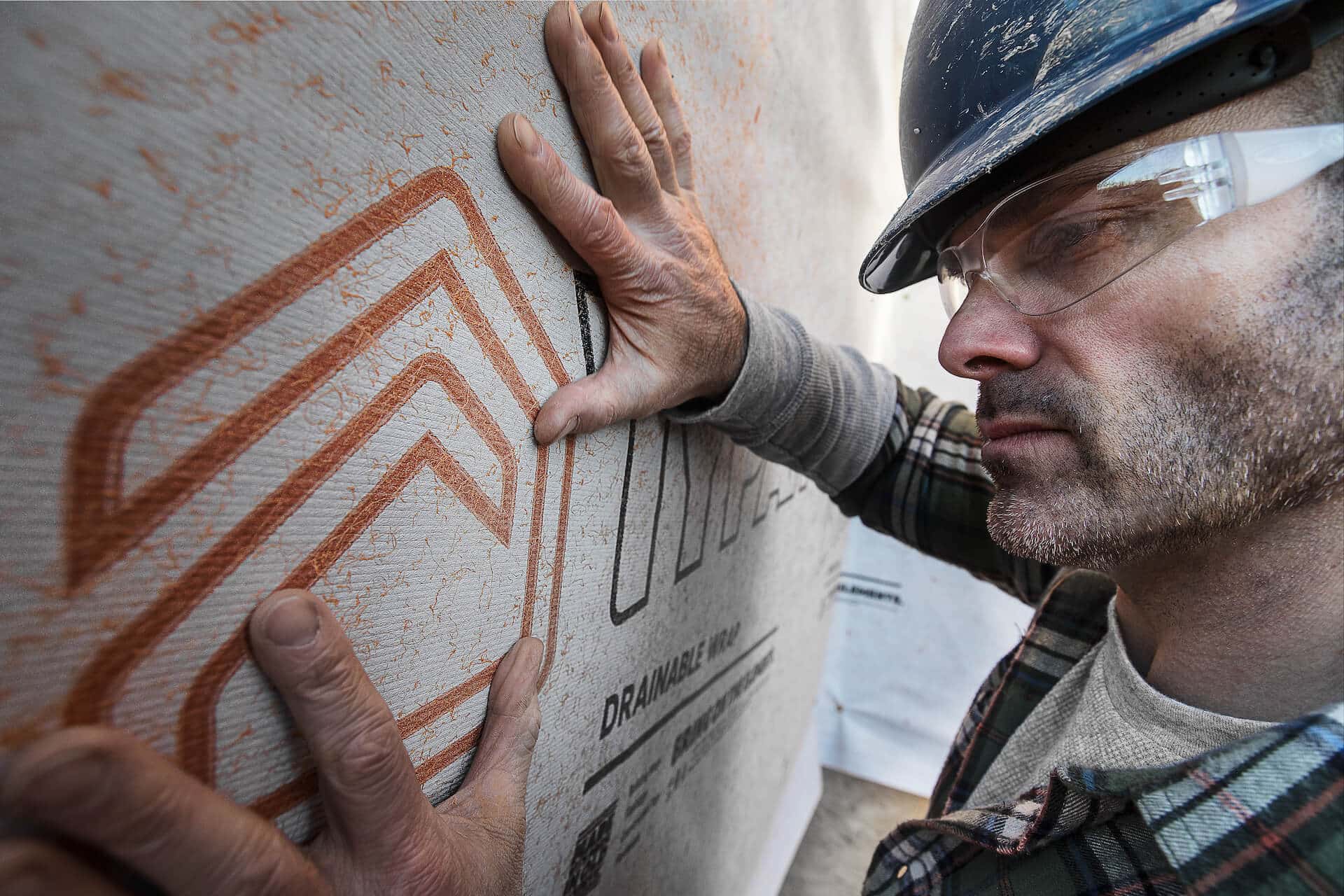HOW DOES CLADDING TYPE AFFECT BUILDING WRAP PERFORMANCE?

Building codes in many parts of the country drive the need for better moisture management solutions, and new drainable building wraps, like TYPAR® DrainableWrap™ and TYPAR DrainableWrap Peel and Stick, are helping builders and contractors meet and exceed drainage requirements. At the same time, the growing preference for absorptive cladding materials, like fiber cement, has made moisture management more critical than ever. Some cladding manufacturers are even going so far as to require drainage gaps behind their materials. The type of cladding installed on your project significantly impacts how the building wrap will perform and should be a key consideration when choosing which type of building wrap is best suited to protect the structure from the elements. Here are three ways cladding type can impact building wrap performance:
- Vapor Drive & Moisture ManagementReservoir claddings such as stucco, brick, and fiber cement have become popular in recent years. Still, they can present major problems if the wall assembly is not constructed to allow adequate drainage. In fact, the widespread failures of stucco cladding installed over wood-based sheathing led both the IBC and IRC to require “a minimum 3/16-inch space…between the stucco and water-resistive barrier or a space having a drainage efficiency of not less than 90 percent.”This is because moisture absorbed by reservoir claddings can be driven inward by solar radiation. The heating of the stored water raises its vapor pressure, driving it both inward and outward. This inward vapor drive is even higher when the indoor environment is cooled by air conditioning. Proper drainage strategies ensure the inwardly driven moisture doesn’t infiltrate the wall cavity, where it can create mold issues and other potential health threats. Because of these characteristics, several fiber cement siding manufacturers are beginning to stipulate that wall assemblies using their products incorporate drainage to qualify for warranty coverage. Products like TYPAR DrainableWrap, which offers bulk water drainage of greater than 90%, can help builders meet these requirements.
- Installation MethodDepending on the type of material and how it is installed, considering a building wrap with integrated drainage may be beneficial—if not required. With vinyl siding, a standard smooth building wrap will likely perform well because the vinyl siding has built-in drainage holes and fits loosely on the wall. Fiber cement board, however, is a different story.The popularity of fiber cement is growing because it is strong, easy to install, less expensive than wood cladding, and low maintenance. In addition, the material is fire- and insect-resistive and can even increase the building’s energy efficiency as part of a tight building envelope. However, because fiber cement board is a tightly fastened cladding, it might trap water between the siding and a standard smooth building wrap, where it could pool before eventually making its way through the wrap and into the framing. This is yet another reason why many fiber cement manufacturers require a drainable wrap to qualify for the warranty. In these situations, a drainable building wrap would be ideal for providing the needed capillary break to allow water to drain out of the assembly. TYPAR DrainableWrap and TYPAR DrainableWrap Peel and Stick feature a layer of multi-directional fibers that divert bulk water from exterior wall cavities and drain it away from the assembly. And TYPAR DrainableWrap Peel and Stick, TYPAR’s first self-adhered drainable building wrap, can be installed in any direction without affecting performance.
- SurfactantsAnother way cladding materials can affect WRB performance is that certain materials, such as wood and stucco, often contain surfactants that can affect the water resistance of the building wrap. Surfactants (surface active agents) are contaminants that lower the surface tension of a liquid, allowing it to penetrate deeper into the building wrap material. Water soluble extractives in wood, such as tannins and wood sugars in redwood and cedar, are examples of surfactants that contaminate the surface of building wraps. In addition, surfactants can be found in detergents, soaps, and other cleaning solutions used to power wash siding, making surfactants almost impossible to avoid. Surfactants promote the loss of water repellency, causing “wetting” of the building wrap surface. Once this occurs, water can more easily pass through the microscopic openings in the building wrap.Some building wraps perform better against these chemicals than others. If the wrap will be exposed to surfactants (and most will be), builders should select a wrap that is surfactant resistant. TYPAR BuildingWrap™, MetroWrap™, and DrainableWrap are all engineered with a specialized coating that resists surfactants. Third-party testing commissioned by The American Society of Heating, Refrigerating and Air-Conditioning Engineers (ASHRAE) showed that TYPAR resisted a power wash solution, while Tyvek Homewrap failed, permitting numerous droplets to form and wet the underlying OSB. The complete testing report can be found at this link Evaluation of Water-Resistive Barrier Performance Using Simple Ponding and Vapor Diffusion Tests
A growing preference for reservoir claddings and new developments in building codes have caused building professionals to look closely at moisture management and drainage strategies. Each project is unique, of course – the myriad choices for building wrap membrane, sheathing materials, and claddings make managing water intrusion, vapor drive, and overall building wrap performance a complex equation. But with a greater understanding of how these components can work together to balance drainage and breathability of the wall while potentially reducing material costs and keeping projects on schedule and budget, you’re off to a head start.
